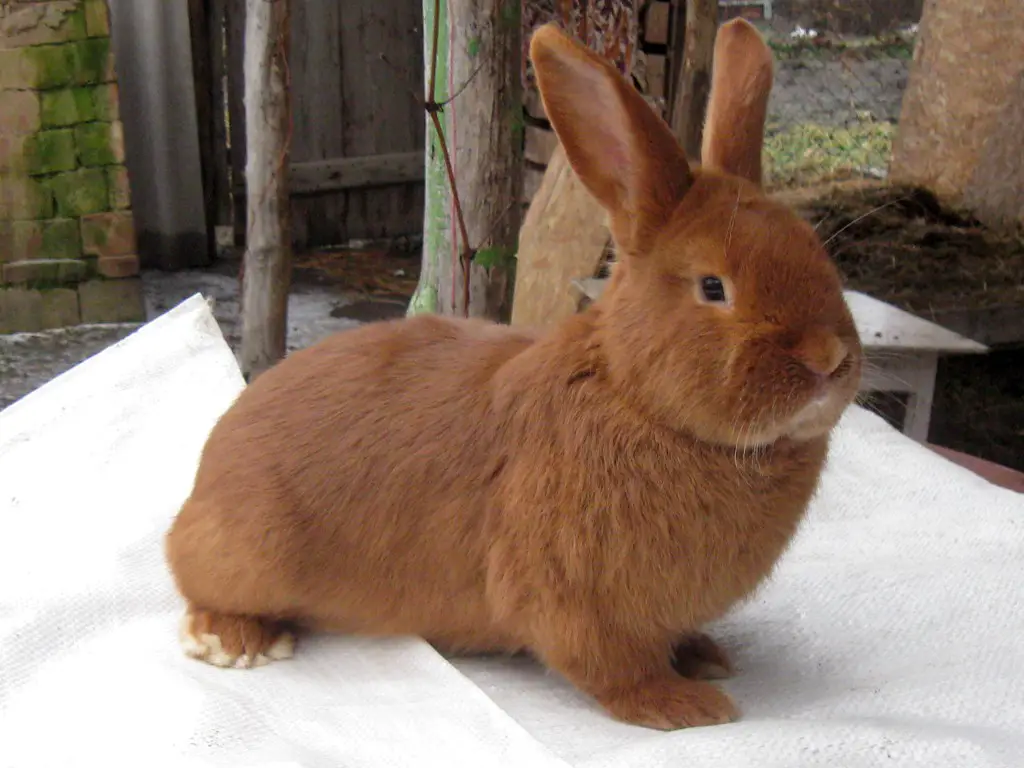Basic Appearance:
The Thrianta (pronounced tree-Ahn-tah) is one of the newest breeds in America. They are medium sized rather stocky rabbits with fiery red-orange color. Their fur is medium in length, and has a gentle rollback when stroked against the grain.
History, Temperament, and Common Uses:
Thriantas originated in Holland, and were developed by a breeder named H. Andreae. He wanted to create an orange rabbit in honor of the royal House of Orange. They were named after the region where he lived, Thrianta. His orange rabbits where recognized by the Dutch standard in May 1940, right before the Netherlands were invaded by Hitler. Unfortunately most of the Thriantas were killed during the war. The few that survived where bred with German rabbits known as Sachsengolds. These new Thriantas where first brought to America in 1996, and continued to be imported until 2003. Former ARBA Executive Director Glenn Carr was able to have the breed recognized in 2005. In America this breed continues to grow in popularity and has a faithful following.
Grooming, Care, and Additional Notes:
Thriantas have rollback coats, which require little grooming. Gently use a slicker to remove loose fur as needed. Rubbing slightly damp hands through your rabbit’s coat will remove static and have him looking his best for showing. Like all rabbits, Thriantas will need more frequent grooming when molting.
When posed a Thrianta’s head should not be pushed down or raised up. The rabbit should be allowed a natural head position to properly show the characteristics desired for the head and ears.
Thrianta At A Glance…
Recognized Varieties:
Recognized in a single variety: a bright, fiery red over the entire rabbit.
ARBA Body Type:
Compact
Approximate Size:
4 to 6 pounds.
Important Things to Look for When Buying Show Stock:
A compact, solid rabbit, rounded, smooth, and balanced. When viewed from the side the topline should start at the base of the ears and rise in a smooth, gradual curve to the highest point over the center of the hips. From the hips the topline should curve down to the base of the tail. From above there should be a slight taper from the widest point at the hips to the shoulders. Overall Thriantas should be plump, smooth, and firm. Hindquarters should be smooth and exhibit roundness from all directions.
The head should be short, full, and set on a short neck. The ears should be erect, stocky, and thickly furred.
Look for legs that are short and straight, with medium bone. The claws should be dark.
Thriantas should have rollback fur. It should slowly resume a natural position after being stroked any direction. The coat should be thick, medium length, and soft. Ideal length of fur is about 1 inch.
A Thrianta’s color is very important, second only to type. It should be a rich, bright, fiery red. Color should be as uniform as possible and carried deep down towards the skin. The color on the belly, underside of tail, and eye circles may a slightly lighter shade of red. Eyes should be a dark brown.
Things to Avoid:
A narrow, long, or flat rabbit. Pinched or undercut hindquarters. Pinched or narrow muzzle, thin ears or ears lacking thick fur. Short, flyback coat, or harsh, wooly, or silky coat. Lack of brilliant color, very light belly color, light claws. White belly color or underside of tail is a disqualification. Slate under color or ear lacing is a disqualification.

